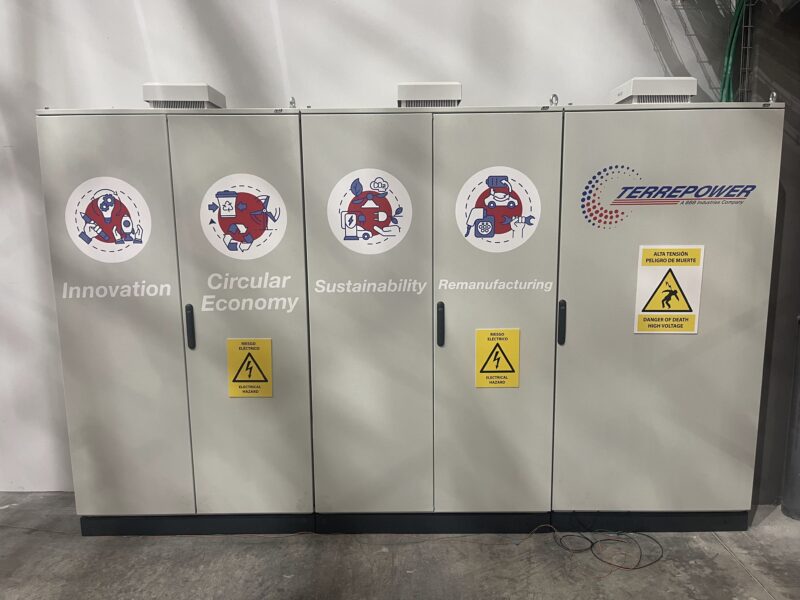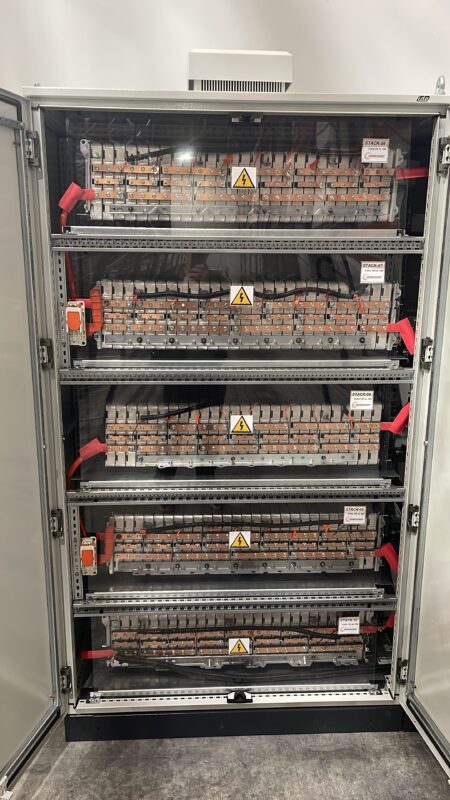Sign up for daily news updates from CleanTechnica on email. Or follow us on Google News!
The electric vehicle (EV) revolution is here. As EV production continues to grow, battery technology is at the center of it all. Making up 30 – 40% of the cost of the entire vehicle, the battery component is grabbing attention from owners (source: Electric Vehicle Battery Costs Soar – IER (instituteforenergyresearch.org). As the highest valued part of the EV, many owners and potential buyers are concerned about what happens when the battery starts to degrade, even when the rest of the vehicle is functioning properly. A new EV battery can provide hundreds of miles of range and save on fuel costs, but what happens when the battery starts to lose performance?
Many early adopters of EVs are beginning to face the problem of battery replacement. In some instances, a replacement battery costs almost as much as the vehicle is worth.
“I repaired my battery in 2020 when my car had almost no range left. It was so degraded that I could barely do 18 miles,” said Carlos Berjano Noya.
Naturally, the high cost of the battery presents a very difficult decision owners.
“I am a natural road runner. Using a remanufactured battery was the best idea for my pocket and the environment. I have been able to continue to enjoy my car with more autonomy and performance than when I bought it new. I have already driven over 74,000 miles with it, and I am delighted!” said Noya.
As owners begin to see their EV batteries degrade, the cost-effective and sustainable alternative of remanufacturing is an option owners should consider.

Focusing on Environmental Impact
With the minerals that go into lithium-ion batteries in high demand, recycled materials from used EV batteries could help meet a significant portion of the demand for new batteries. Manufacturing a new battery is carbon intensive. That’s important to EV owners who are concerned about offsetting carbon emissions.
“In a not-so-distant past, we were blasted with recycling campaigns everywhere we looked. Now, we must recalibrate. Recycling is literally the last thing we should do,” says Cody Patterson, Vice President of Sales and Marketing for TerrePower.
The emergence of EV battery remanufacturing is known as the circular economy. The circular economy business model, tested for decades on traditional vehicle components, can be applied to new EV battery technology. Remanufacturing has been shown to decrease production emissions by over 80%.
EV batteries requiring critical materials don’t have sustainable supply chains and with growing demand, this can be concerning. Lithium mining is extremely limited with only six mining companies controlling over 55% of the total lithium mining supply, according to Statista. Though concerned about demand, the reuse of the battery itself alleviates some demand for these battery metals, taking production pressures off OEMs.
“Those concerned with the supply and demand of a new product should seriously consider critical material management after the first use. Naturally, a solution retaining the most value of those critical materials should be a priority,” said Mark Nugent, Chief Sustainability Officer, BBB Industries.
By 2050, the National Renewable Energy Laboratory expects the demand for graphite, lithium, and cobalt, all critical minerals/elements in EV batteries, to increase by 500%. It estimates that the lifetime of an EV battery is around 12 to 15 years in moderate climates. Like traditional component failure forecasting, the collection and efficient return of a degraded product back to the market can be timed precisely to keep EV drivers on the road.
What about the batteries that are degraded beyond repair? These products can be used for battery energy storage, opening the door for energy flexibility strategies such as peak shaving, backup power, or emergency response solutions.
Better Battery Technology: Sustainable Solutions
Better battery technology is going to determine the EV market. However, second-life batteries not only shape secondary demand but also offer the benefits of maximizing battery value and extending the battery’s life.
The good news is that several companies are developing technologies to solve these problems. TerrePower is one of them. TerrePower is the EV battery, solar energy, and battery energy storage lifecycle solution division of leading global sustainable manufacturing company BBB Industries.
By applying over 35 years of circular economy experience, TerrePower has become a key player in maximizing and extending battery life.
TerrePower has proven that upgrading one piece of the degraded battery could yield big improvements in battery performance at a relatively low cost. EV batteries are made of several modules. A repair could be as simple as replacing one module. This can save owners hundreds of dollars.
EV battery remanufacturing is sustainable, as it reduces the need to mine for the raw materials that are used to manufacture new batteries. Furthermore, it significantly avoids the high carbon intensities of new battery production.

Demand for Other Uses
The demand for better battery technology and reuse will continue to soar as renewable energy becomes an increasingly popular topic in 2024.
TerrePower is the only company of its kind that sustainably manufactures EV batteries, solar panels, and energy storage systems. For vehicle batteries, the process includes identifying the weak components in the battery pack and replacing them with tested good components to improve the battery pack’s performance so it can be used in a vehicle again. Battery modules that have degraded to the point they can no longer be used in mobility are then repurposed into energy stationary storage units to give them a second life.
“The use of EV batteries is accelerating and, over time these batteries will degrade,” says Patterson. “We provide a solution that can give those batteries a second life. It’s not only cost-effective, but it’s also a sustainable solution that presents new business opportunities for a circular economy. There are economic and environmental benefits of second-life electric vehicle batteries use for energy storage in households, utilities, and EV charging stations.”
As an EV battery’s capacity falls below 80%-85% after eight to 10 years of use, it can be repurposed to hold backup power for buildings or even balance local and national energy grids.
“Electric vehicles are beneficial to the environment. However, they rely on materials such as lithium and cobalt, of which the very act of mining them is very carbon intensive. When you find alternative solutions to continue to use these materials in other ways such as remanufacturing or repurposing, it’s sustainable manufacturing and a true circular economy,” says Patterson.
According to the International Energy Agency, over 300 million electric vehicles are expected to be on the road worldwide by 2030. Ensuring that we harness the most value out of the critical materials we already have will accelerate the path to a sustainable future.
This article is sponsored by TerrePower.
Have a tip for CleanTechnica? Want to advertise? Want to suggest a guest for our CleanTech Talk podcast? Contact us here.
Our Latest EVObsession Video
[embedded content]
I don’t like paywalls. You don’t like paywalls. Who likes paywalls? Here at CleanTechnica, we implemented a limited paywall for a while, but it always felt wrong — and it was always tough to decide what we should put behind there. In theory, your most exclusive and best content goes behind a paywall. But then fewer people read it!! So, we’ve decided to completely nix paywalls here at CleanTechnica. But…
Thank you!
Advertisement
CleanTechnica uses affiliate links. See our policy here.
- SEO Powered Content & PR Distribution. Get Amplified Today.
- PlatoData.Network Vertical Generative Ai. Empower Yourself. Access Here.
- PlatoAiStream. Web3 Intelligence. Knowledge Amplified. Access Here.
- PlatoESG. Carbon, CleanTech, Energy, Environment, Solar, Waste Management. Access Here.
- PlatoHealth. Biotech and Clinical Trials Intelligence. Access Here.
- Source: https://cleantechnica.com/2024/01/03/technology-driving-ev-batteries-for-a-second-life-a-cost-effective-sustainable-solution/




